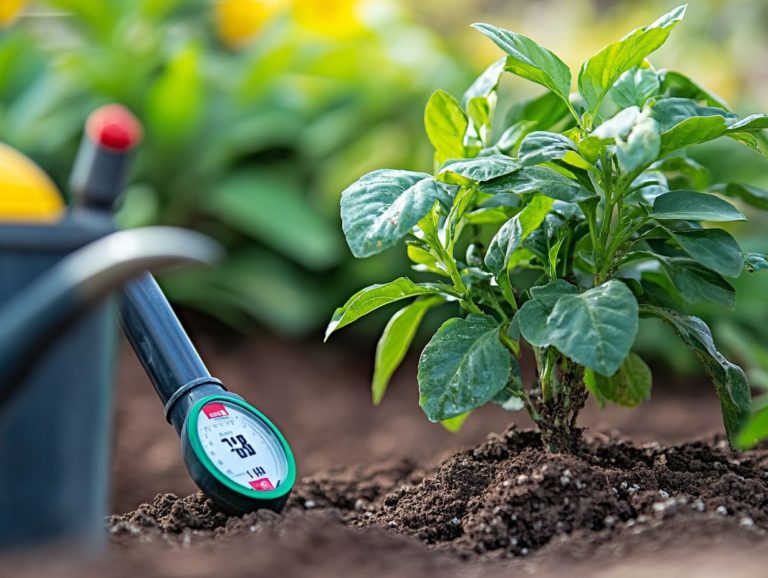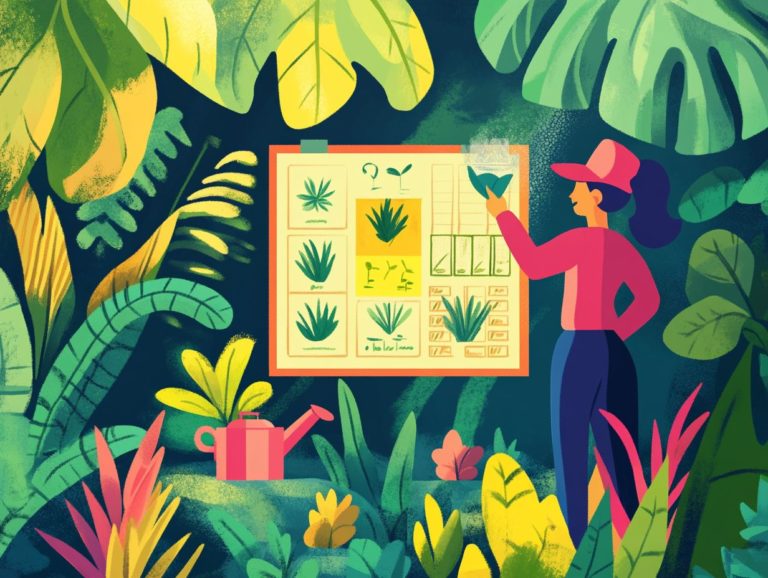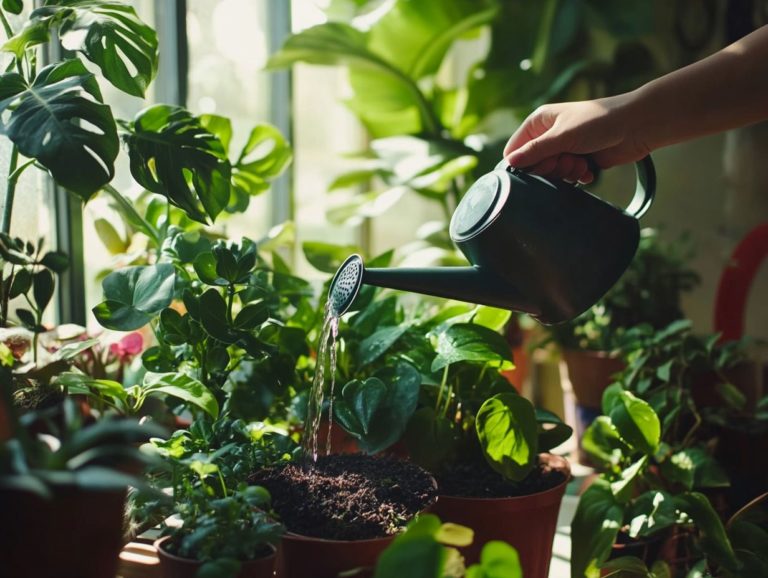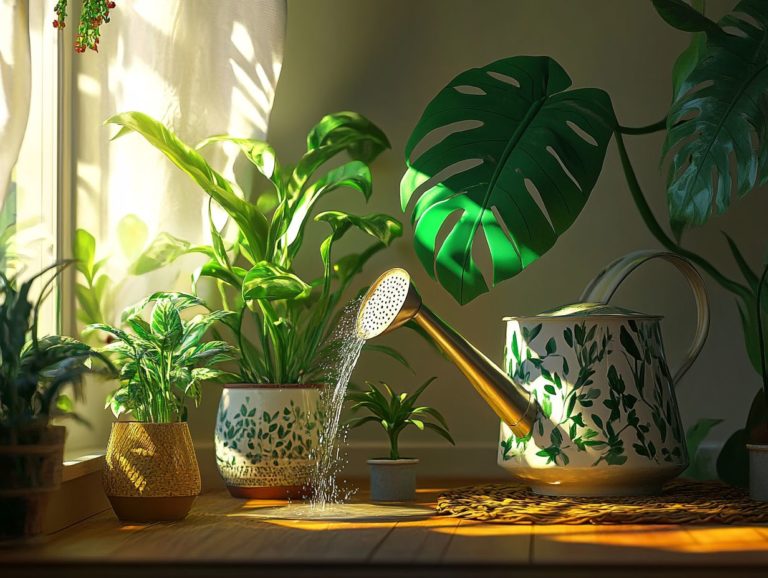How Rain Water Benefits Indoor Plants
Water serves as the lifeblood of your indoor plants, fundamental for their growth and vitality. However, not all water is created equal. While tap water may offer convenience, rainwater presents unique benefits that can significantly enhance your plant health.
Let s explore how water fuels your plants growth and why rainwater is a game-changer! This article compares the merits of rainwater versus tap water and provides practical tips on how to collect and utilize rainwater effectively.
Whether you re a seasoned houseplant enthusiast or just embarking on your botanical journey, you ll discover how to provide your indoor plants with the highest level of care possible.
Contents
- Key Takeaways:
- The Importance of Water for Indoor Plants
- Rain Water vs. Tap Water for Indoor Plants
- How to Collect and Store Rain Water for Plants
- Using Rain Water for Different Types of Indoor Plants
- Tips for Incorporating Rain Water into Plant Care Routine
- Frequently Asked Questions
- How does rainwater help my indoor plants?
- Why is rainwater better than tap water for indoor plants?
- Do indoor plants prefer rainwater over other types of water?
- Can I collect rainwater and use it to water my indoor plants?
- How often should I water my indoor plants with rainwater?
- Are there any other benefits of using rainwater for indoor plants?
Key Takeaways:
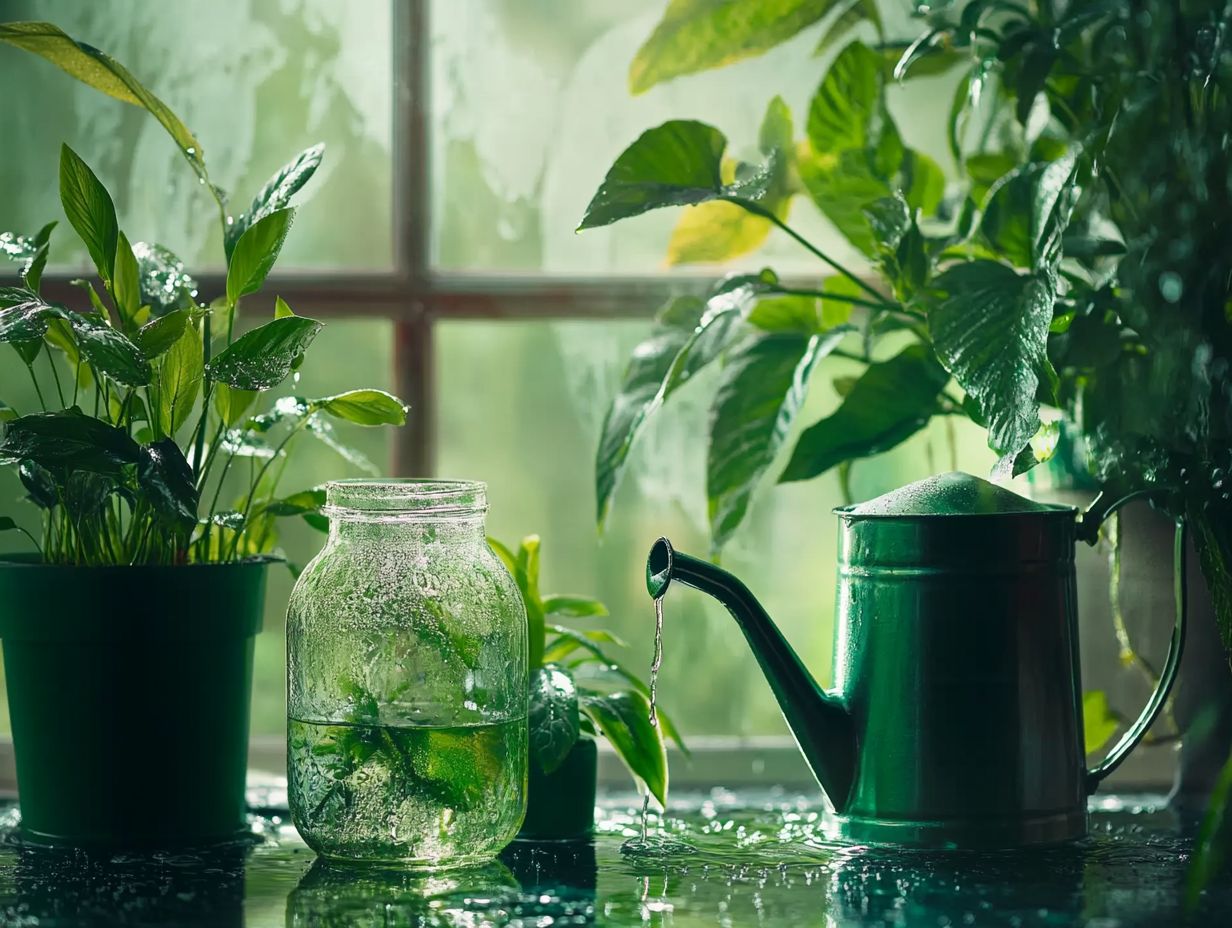
- Rainwater is beneficial for indoor plants because it is free from harsh chemicals and minerals found in tap water, allowing plants to absorb nutrients more easily.
- Collecting and storing rainwater following best practices ensures that it remains clean and suitable for indoor plants, promoting their overall health and growth.
- Incorporating rainwater into a plant care routine can be done in various ways, such as using it for watering, misting, or creating a natural fertilizer, providing maximum benefits for indoor plants.
The Importance of Water for Indoor Plants
Water is essential for the health and growth of your indoor plants. It serves as the primary conduit for essential nutrients and overall vitality. When you provide the right quality of water, your plants can thrive, absorbing vital macro-nutrients and utilizing pure hydration for photosynthesis and robust growth.
Recognizing the importance of proper watering techniques can transform your greenery into a lush display and ensure strong, vibrant plant health.
Why Water is Essential for Plant Growth
Water is vital for plants because it helps them take in nutrients. This essential liquid serves as the medium through which key macro-nutrients like nitrogen, phosphorus, and potassium are dissolved, making them readily available to plant roots. When water content is adequate, it enhances soil structure, fostering the formation of aggregates that promote air circulation and allow roots to penetrate deeply.
This improved water retention is particularly vital in sandy soils, where nutrients tend to leach away. In such environments, water helps maintain organic matter, enriching the soil ecosystem further.
Balanced pH levels help nutrients become available to plants, highlighting the intricate relationship between water, soil composition, and plant vitality.
Rain Water vs. Tap Water for Indoor Plants
Choosing between rainwater and tap water is important for your indoor plants, as each option possesses distinct properties that significantly influence plant health and growth.
Rainwater, with its natural softness and absence of harmful chemicals, offers an ideal hydration solution. In contrast, tap water often includes additives such as chlorine and fluoride, which can disrupt optimal pH levels and hinder nutrient absorption for your beloved plants.
Benefits of Using Rain Water
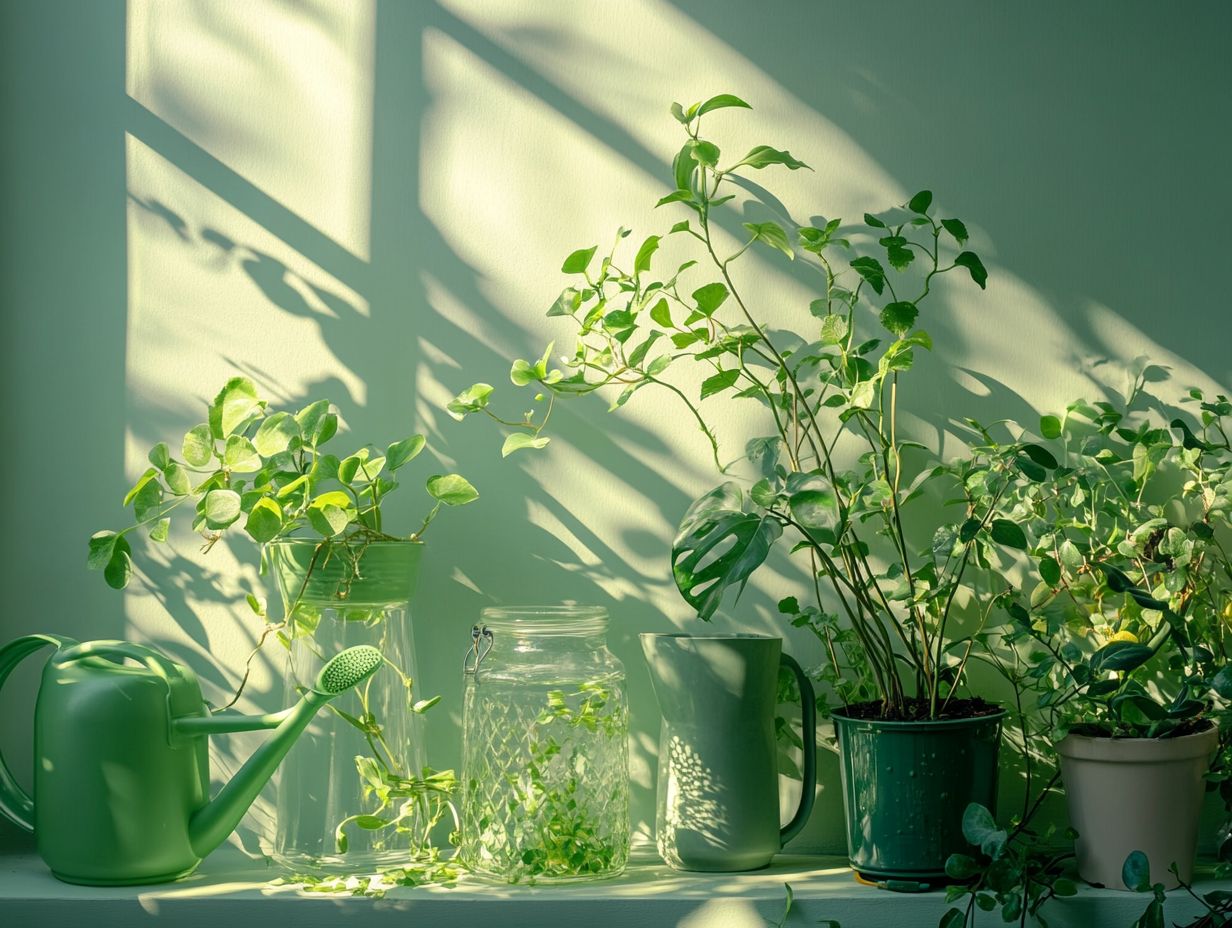
Using rainwater for your indoor plants provides a wealth of benefits, primarily thanks to its nutrient-rich composition and balanced pH levels that promote healthy growth. This naturally pure water is free from the chemical treatments often found in tap water, making it an ideal choice for cultivating thriving green spaces.
The essential nutrients in rainwater can support a range of vegetation, from lush foliage to vibrant blooms, enhancing both beauty and vitality in your home. Don t miss out on the chance to boost your indoor garden s health with this simple, free resource!
Getting started with rainwater harvesting is easier than you think! Here are a couple of simple ideas:
- Rain barrels connected to downspouts
- Cisterns for larger collections
Not only does this practice reduce your dependency on municipal water systems, but it also plays a crucial role in water conservation. It’s a sustainable and eco-friendly choice that benefits not just your plants, but the environment as well. Begin harnessing rainwater today to give your plants the best care possible!
Potential Risks of Tap Water
While tap water is convenient, it may harbor risks for your indoor plants due to harmful substances like chlorine and fluoride, which can compromise their health and growth.
They can disturb the soil pH levels, making it challenging for your plants to absorb essential nutrients effectively. If the soil becomes too acidic or alkaline, your plants might struggle to flourish, leaving them susceptible to diseases and stunted growth.
It s essential for you, as a plant enthusiast, to assess the quality of your tap water and consider alternatives, like filtered or rainwater, to ensure your botanical companions receive optimal care. By exploring these alternatives, you can significantly enhance the vitality and longevity of your plants, cultivating a more robust and thriving indoor garden environment.
How to Collect and Store Rain Water for Plants
Collecting and storing rainwater offers an efficient solution for ensuring your plants receive clean water. By implementing well-designed collection systems, you not only streamline this process but also contribute positively to the environment.
Best Practices for Collecting and Storing Rain Water
To get the most out of rainwater harvesting, follow best practices for collection and storage. This ensures effective use of rainwater.
- Begin by selecting the right rain barrels opt for those made of food-safe materials, complete with secure lids to keep out debris and pesky mosquitoes that could compromise the water quality.
- Proper drainage is another critical component; connecting your barrels to downspouts and incorporating overflow systems will help you avoid flooding and water pooling in your yard.
- Regular maintenance keeps your stored water clean and free of algae and sediments.
To elevate your sustainability efforts in plant care, consider employing eco-friendly practices such as using natural mulches or organic fertilizers. These strategies will not only benefit your plants but also enhance the surrounding ecosystem.
By engaging in these practices, you conserve water and contribute to a healthier environment.
Using Rain Water for Different Types of Indoor Plants
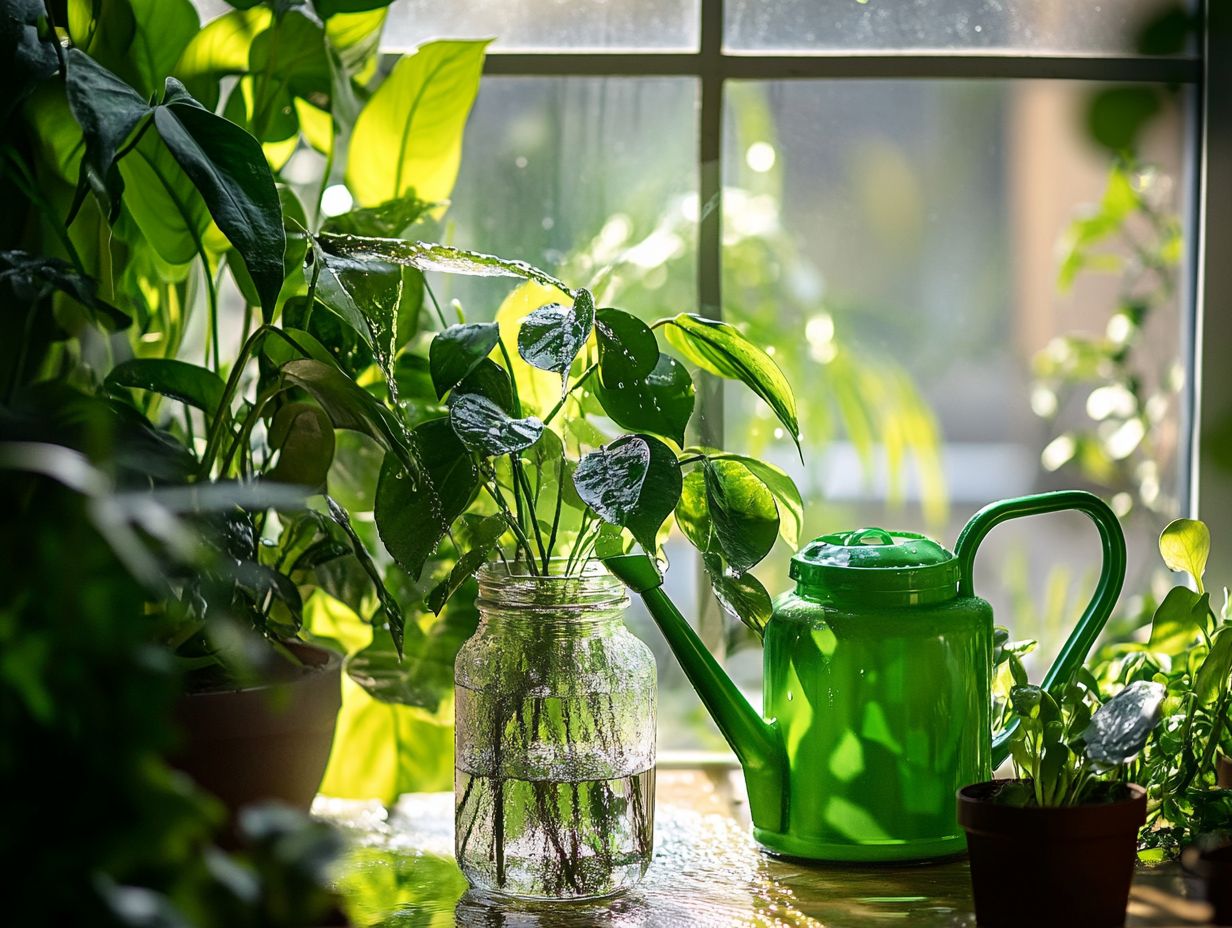
Different types of indoor plants have unique requirements, and utilizing rainwater can greatly improve their capacity to flourish and absorb vital nutrients.
By providing this natural resource, you re not just nurturing your plants; you re elevating their growth potential to new heights.
Specific Plant Needs and Preferences
Understanding the specific needs and preferences of your indoor plants is essential for their successful nurturing. Different species have varying requirements for hydration and nutrients, and recognizing these differences can make all the difference in their growth.
To cultivate lush foliage and a vibrant appearance, it’s vital to pay attention to water quality, as this significantly impacts your plants’ health. Rainwater, often softer and devoid of the harsh chemicals found in tap water, helps maintain an optimal soil pH, which refers to how acidic or alkaline the soil is. For more effective care, learn how to maintain soil moisture for indoor plants. This promotes better nutrient uptake, ensuring essential minerals and elements are readily available to your plants, enhancing their growth and vitality.
By utilizing rainwater, you can mimic a natural watering approach that allows your plants to truly thrive! This thoughtful practice enables your plants to flourish and reach their full potential.
Tips for Incorporating Rain Water into Plant Care Routine
Incorporating rainwater into your plant care routine can lead to extraordinary benefits for your plants’ growth and overall vitality. There are a variety of effective methods to seamlessly integrate this natural resource into your gardening practices.
Effective Ways to Use Rain Water for Maximum Benefits
Using rainwater in your garden can transform your plants and make them thrive! It greatly enhances taking in nutrients and improves soil health in your indoor gardening endeavors.
Incorporating rainwater into your gardening routine not only conserves invaluable resources but also ensures your plants receive essential minerals typically found in natural rainfall. One of the most effective approaches is to use it directly for watering. This soft water replenishes your plants while steering clear of the harsh chemicals often lurking in tap water. For more insights on proper techniques, check out the science of watering indoor plants.
Mixing collected rainwater into your composting process can boost the activity of tiny organisms that help break down organic matter, enriching the organic matter even further. For those aiming to maximize the benefits, setting up rainwater systems that channel runoff directly to your container gardens or flower beds can foster a sustainable ecosystem that nourishes your indoor plants in the most natural way possible. Additionally, understanding the best watering techniques for indoor plants can further enhance their growth and health.
Frequently Asked Questions
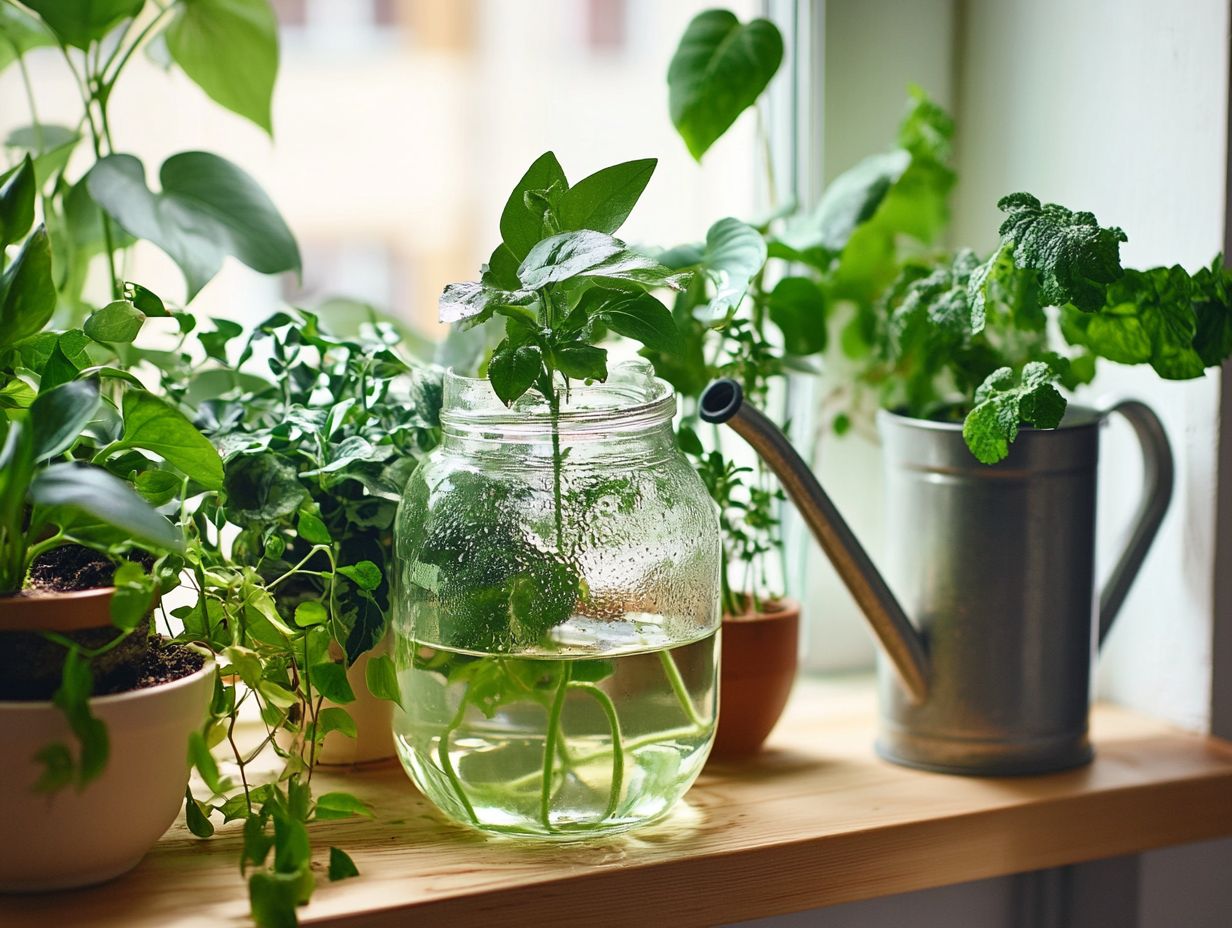
How does rainwater help my indoor plants?
Rainwater promotes healthy growth because it is free from chemicals and pollutants found in tap water. This allows the plants to absorb nutrients more easily.
Why is rainwater better than tap water for indoor plants?
Tap water often contains chlorine and fluoride, which can be harmful to plants. Rainwater, on the other hand, is naturally pure and free from these harmful chemicals, making it a better option for watering indoor plants.
Do indoor plants prefer rainwater over other types of water?
Yes, most indoor plants prefer rainwater over distilled or filtered water. Rainwater contains natural minerals and nutrients that are beneficial for plant growth.
Can I collect rainwater and use it to water my indoor plants?
Absolutely! Collecting rainwater is a great way to water your indoor plants. Just ensure you use a clean container and filter out any debris before using it.
How often should I water my indoor plants with rainwater?
It is recommended to water indoor plants with rainwater once a week or whenever the top inch of soil is dry. Check for drooping leaves or dry soil to gauge the need for water.
Are there any other benefits of using rainwater for indoor plants?
Aside from being chemical-free, rainwater also has a neutral pH level, which is ideal for most plants. It helps to flush out any excess salts that may have accumulated in the soil from previous waterings.
Don’t miss out on the benefits of rainwater!

